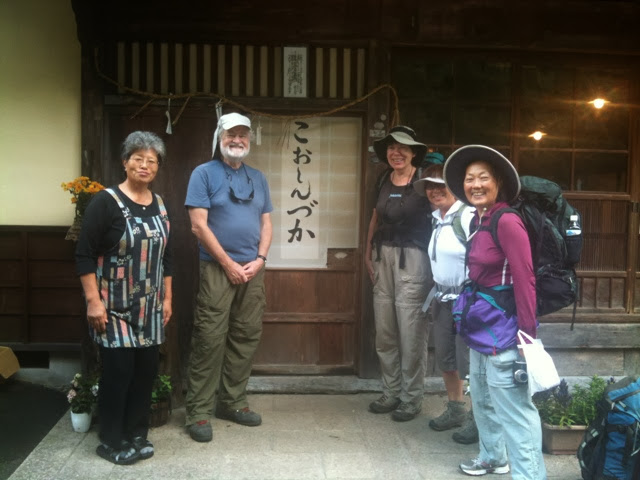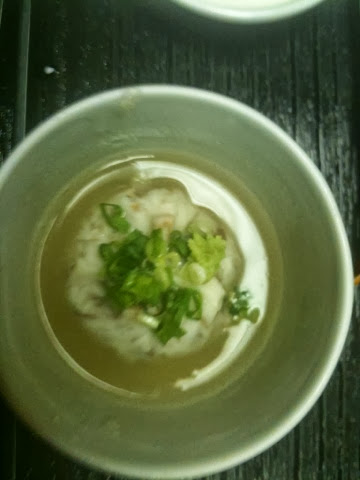Typhoon 28 is rattling the outside screens in our tatami room, & pouring down rain, but we are snug & cozy on the sacred Buddhist mountain of Koya. We are spending the night in an inn attached to one of the many temples on this mountain. Even arriving in the dark and rain, we could tell the gardens are wonderful, with carefully raked patterns in the gravel & we are all looking forward to seeing them in daylight.
Tomorrow we will be up before six am to join the monks in their morning chanting. Then breakfast, and hopefully another chance to soak in the onsen ... heaven.
Our vegetarian dinner.
According to its advertising, this is the only inn on the mountain with an onsen, and it is a doozy. Indoor and outdoor baths, and a sauna. Because of a little mix-up, I can tell you that both the men's and the women's bath areas are lovely.
Yes, in a stunning re-creation of my Budapest mis-adventure, somehow I managed to enter the men's bath. But really, if they are going to use pink hangings for the men's bath, what do they expect? It was Dave who pointed to the rather obvious sign next to the pink:
Somehow I entered when no one else was there, disrobed, checked out both the indoor and outdoor baths, and sat in the sauna for 10 minutes, all stark naked, without encountering a soul. It wasn't until I exited that I ran into Dave, on his way to dinner. The look of horror on his face was a sight to behold.
However, I can now report that the men's outdoor bath area is a bit larger: 3 separate round cedar soaking tubs in a beautiful garden setting. The women's outdoor area has a rock pool in a much smaller area. Indoor soaking pools are similar, but the woman's changing room has blow-dryers ( should have been my first clue).
Tomorrow we will explore some of the temples on Koyasan before returning to Osaka for our final night in Japan.



















































